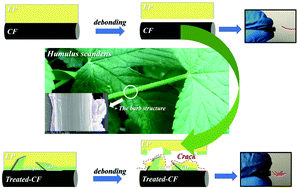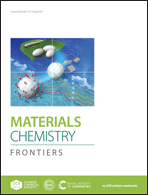Bio-inspired barb structure designed on the surface of carbon fibers to enhance the interfacial properties of composites in multiple scales
Abstract
The properties of fiber–matrix interfaces are one of the most important factors that influence the performance of carbon fiber-reinforced polymer (CFRP) composites. Therefore, it is necessary to strengthen the interfacial adhesion between carbon fibers (CFs) and the matrix to obtain composites with excellent properties and meet the future demand for advanced composites. Inspired by Humulus scandens, graphene oxide (GO) was introduced on the surface of CFs to build a barb structure. The structure could achieve a mechanical interlock between CFs and the matrix to obtain good interfacial properties. Most remarkably, the bionic structure could not only effectively enhance the interfacial properties, but also deflect the direction of interfacial crack propagation as supported by detailed micro- and macro-characterizations. Compared with the original CFs, both the interlaminar shear strength (ILSS) and interfacial shear strength (IFSS) of treated CFs increased by 49.20% and 54.93%, respectively. Above all, this work verified that the bionic structure has a good effect on the interface, and paves a new path to explore the enhancement methods of the interface.



 Please wait while we load your content...
Please wait while we load your content...